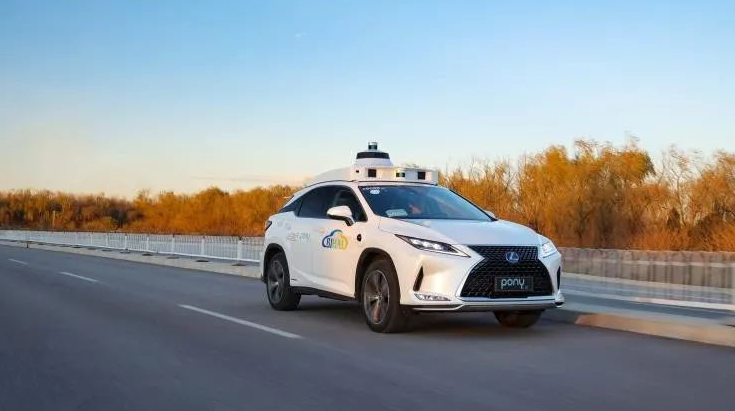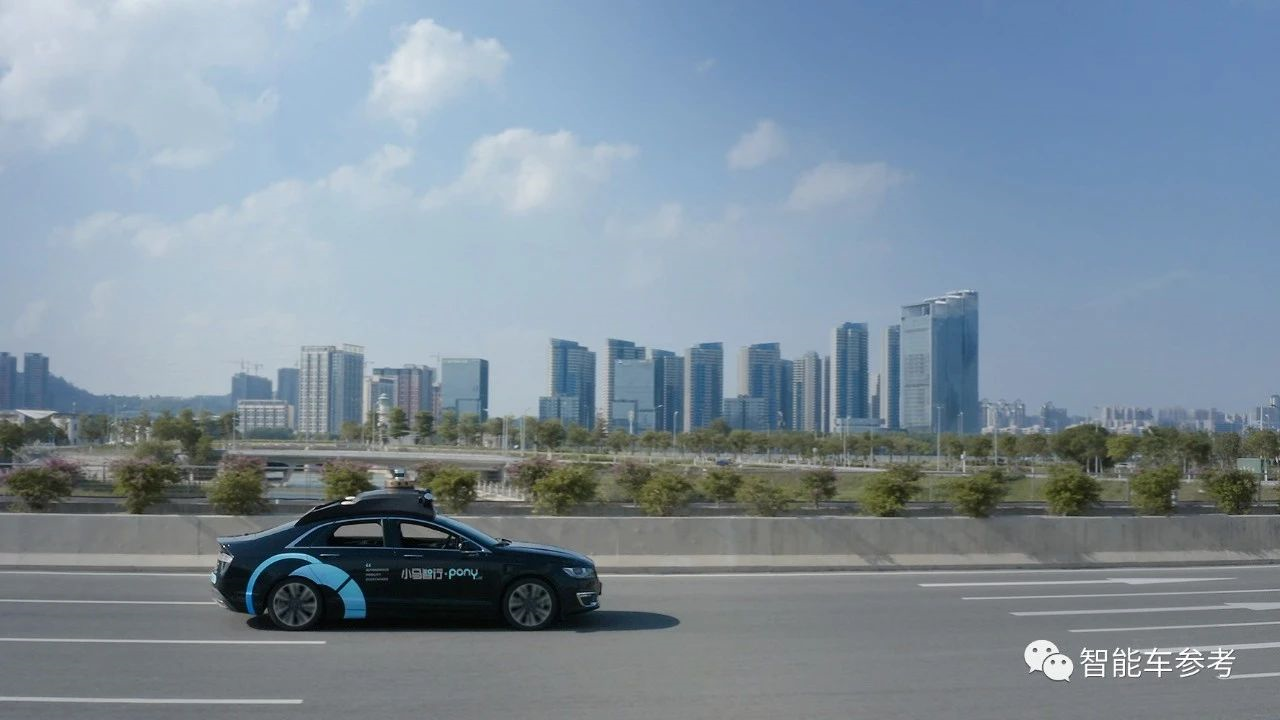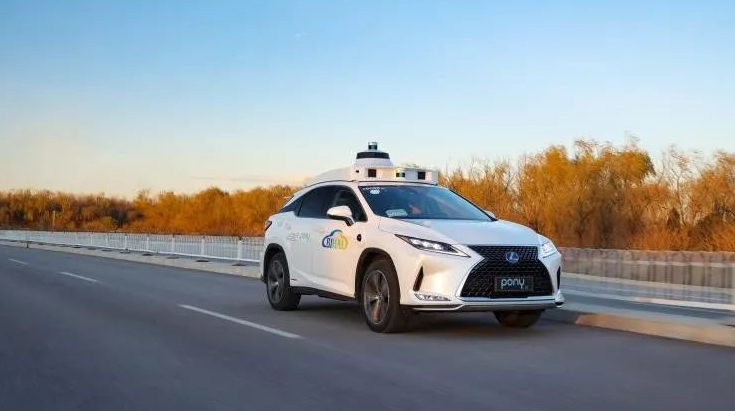Jia Haonan posted from the Co-pilot Temple
AI4Auto | intelligent vehicle reference | WeChat official account
Just now, Pony.ai announced the completion of Series D financing.
“Before this financing round, Pony.ai’s latest valuation had already reached $8.5 billion.”
In addition, after the first delivery of Series D financing, Pony.ai has substantial cash flow, with “cash reserves of $1 billion.”
The official statement of the financing round indicates two directions: accelerating mass production and commercialization, as well as supporting Pony.ai’s global expansion strategy.
The official announcement of this financing round also shows that:
“Pony.ai has completely emerged from last year’s challenges and remains the most recognized autonomous driving start-up company in terms of technology and capital.”
Before this financing round, according to public disclosure, Pony.ai has accumulated more than $1.1 billion in financing and its valuation has continued to rise.
With a valuation of $8.5 billion, Pony.ai is unparalleled in China’s autonomous driving industry and is in a leading position in the global autonomous driving start-up sequence.
Pony.ai is recognized as a “leader” not only by its valuation and capital endorsement but also by its advanced technology and rapid progress.
New Financing Situation
Pony.ai’s series D first round financing has an overall pre-investment valuation of $8.5 billion.
This financing round also gave the company “ammunition” of $1 billion cash.
And these funds, Pony.ai plans to use to continue polishing its “virtual driver” technology, and promoting the development of its two main business segments, Robotaxi and Robotruck.
Firstly, it provides strong support for mass production, commercial deployment, and global expansion, reflecting confidence in Pony.ai and the entire autonomous driving industry.
Moreover, Pony.ai also plans to continue to expand its global footprint by adding new testing and operation centers.
Compared with the series C financing (February 2021), Pony.ai’s valuation in this financing round has grown by about 65%, reaching $8.5 billion, the highest valuation among China’s autonomous driving startups.
The official believes that the deep technical strength and Pony.ai’s commercial progress in Robotaxi and intelligent logistics are the fundamental reasons for its high valuation.
So what did Pony.ai do in 2021?
“One of the most valuable” driverless car companies, where are they now?
In 2021, there were several keywords for the Pony.ai company.
The first is to “expand the operation of Robotaxi.”In April 2021, PonyPilot+ — an upgraded self-driving ride-hailing service equipped with the PonyAlpha X system — was launched in five cities: Beijing, Shanghai, Guangzhou, Irvine, and Fremont. Compared to its previous version, the upgraded service features a great improvement in fleet size, service coverage, and service quality. Shanghai was the first city to launch the service last year.
To introduce the new system to the operational fleet, three things had to be done from production to operation: first, road testing, which requires solid technology and a scientific evaluation process from closed roads to busy urban streets and from off-peak hours to rush hour traffic; second, licensing and permitting, which require obtaining corresponding testing or operation licenses or regulations in Beijing, Shanghai, Guangzhou, and other cities to expand service coverage and scale; third, upgrading the service process and vehicle management platform to support scaling.
PonyPilot service orders have rapidly accumulated in 2021, and the user base has gradually expanded. Currently, the company has provided approximately 600,000 transportation services to users.
Second is commercialization.
In 2021, Pony.ai made orderly progress in commercializing its autonomous driving technology in both transportation and logistics. In May of last year, it obtained a road transport operation permit and officially started its commercial operations with autonomous driving trucks. By December, it had delivered 18,968 tons of goods, and the commercial autonomous driving mileage had reached 63,436 kilometers.
As the business progresses, in February 2022, the total weight of goods transported by commercial autonomous driving trucks reached 20,310 tons, and the commercial autonomous driving mileage was 85,476 kilometers.
In November 2021, Pony.ai obtained a commercial pilot permit for autonomous driving ride-hailing services from the Beijing government, allowing it to provide commercial Robotaxi services to the public.
This marks the official transition of Pony.ai’s passenger car business from technology testing to commercial mode verification.
Third is highway driving.
In July of last year, Pony.ai obtained testing permits for self-driving trucks and passenger cars on highways in Beijing. Autonomous driving trucks smoothly drove into the Jing-Tai Expressway (Beijing to Taiwan) and completed the first public highway test of autonomous driving trucks in China, paving the way to expand the scenario coverage.
Lastly, is the Sinotrans partnership.In the logistics industry, Xiaoma Zhixing partnered with China’s leading logistics company, China National Foreign Trade Transportation (Sinotrans), to establish a joint venture company at the end of last year. The goal is to build a high-quality intelligent logistics and transportation platform with autonomous driving technology as the core.
Xiaoma Zhixing’s Strategy
Most players in the industry think that the clear theme for autonomous driving is to focus on expanding its territories and improving its operations.
Xiaoma Zhixing’s strategy is to pursue both RoboTaxi and unmanned freight transportation.
Today, Xiaoma Zhixing has its RoboTaxi operating in five locations across China and the U.S., and has entered into the unmanned operational phase, with the safety officer removed.
This means that the biggest obstacle to the commercialization of RoboTaxi is being gradually removed.

After entering unmanned RoboTaxi operations in Guangzhou, Xiaoma Zhixing’s two founders even took a rare ride together, showcasing their technical capabilities to both insiders and outsiders.
It’s worth noting that Xiaoma Zhixing’s RoboTaxi provides services for both vehicle models – the Lexus pre-production, and service scenarios that cover morning and evening rush hours, nights, and special weather in both Guangzhou and Beijing, indicating that it is only a matter of time before it lands in more cities.
On the freight side, Xiaoma Zhixing started its unmanned freight project in 2018.
The latest progress update was described earlier.
Why pursue a dual approach?
For Xiaoma Zhixing, their focus from the beginning has been on the application of AI technology in the automotive/transportation industry, and the successful implementation of autonomous driving and AI virtual drivers. This transformation is a comprehensive engineering project. The AI system is the brain, and the vehicle engineering is the body. They must work together to achieve success.
So, what is Xiaoma Zhixing’s way?
Their focus is on developing AI virtual drivers.

RoboTaxi is the most extensive and technically demanding application scenario for the future, with potential significant socioeconomic driving forces that are difficult to estimate.
Therefore, almost all autonomous driving companies, domestic and foreign, strive for this goal.
However, autonomous driving has never been a short-term race, especially RoboTaxi. Technical and policy improvements take time.
The high-speed freight transportation scenario is relatively simple and can significantly reduce costs and increase efficiency, making it a natural choice and a golden path for autonomous driving startups to prove their worth to the capital market, the industry, and society. From a technical perspective, autonomous driving is essentially a general technological capability. While the execution aspects need to be adjusted according to the car model and working conditions, there are many commonalities in the core technologies of perception, recognition, and strategy.
Through its data loop capability, Xiaoma Zhixing’s data collection on heavy trucks is undoubtedly an improvement of its full-stack autonomous driving capability.
In the current situation where the regulations for RoboTaxi are still unclear and it is difficult to scale up quickly, the approach of “walking on two legs” is more clear in terms of ideas, both to advance towards the highlands of technology and to dig deep and accumulate resources with far-sighted planning.
The common autonomous driving system platform behind the two tracks will drive all new business directions and is also the latest dynamic development trend in Xiaoma Zhixing’s technology.
— End —
This article is a translation by ChatGPT of a Chinese report from 42HOW. If you have any questions about it, please email bd@42how.com.
